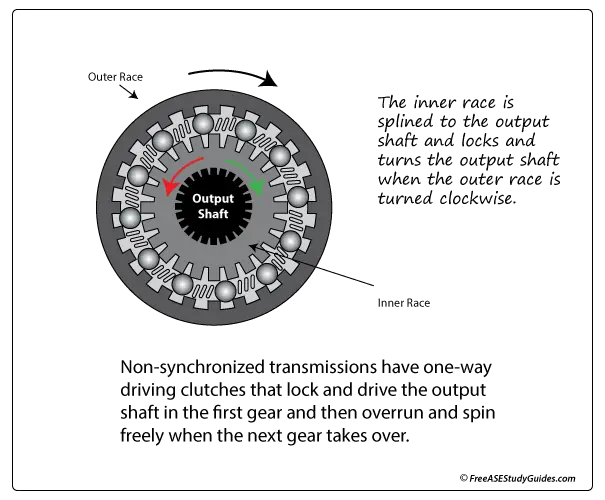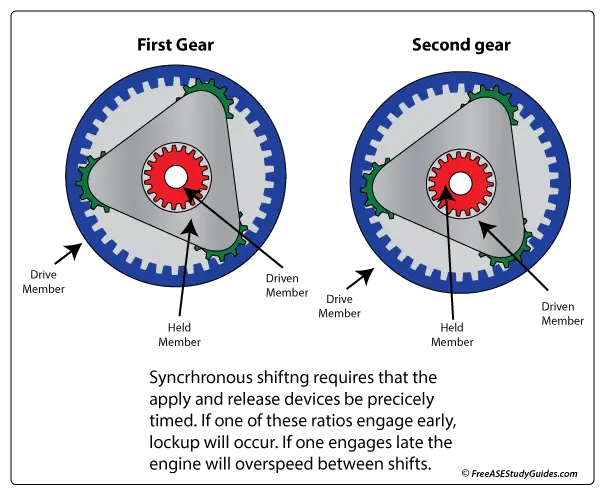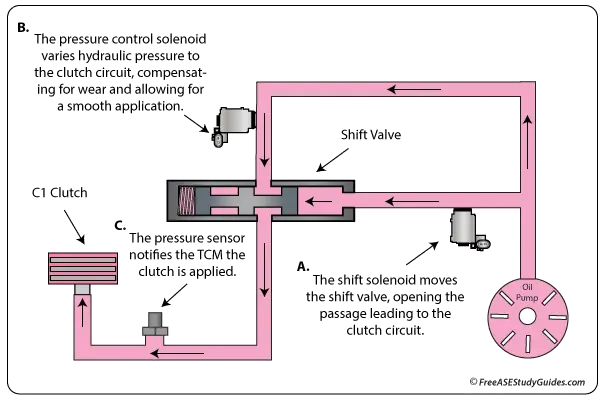Non-Synchronous vs Synchronous Shifting

A non-synchronous automatic transmission uses a one-way driving clutch that overruns as the next gear engages. This clutch prevents binding and allows the output shaft to spin faster, increasing vehicle speed. Non-synchronous shifting is different from more precise synchronous shifting. Synchronous shifting requires precise timing between applied devices.

In modern clutch-to-clutch transmissions, precise timing is important. As one clutch releases, the next clutch engages. This timing is known as shift overlap. Inaccurate timing results in binding or overspeed.

The TCM moves the shift valve to open the circuit to the pressure control solenoid. The pressure control solenoid uses pulse width modulation to apply the clutch. The TCM receives a signal from the circuit's pressure sensor and releases the previous clutch. The timing is essential.